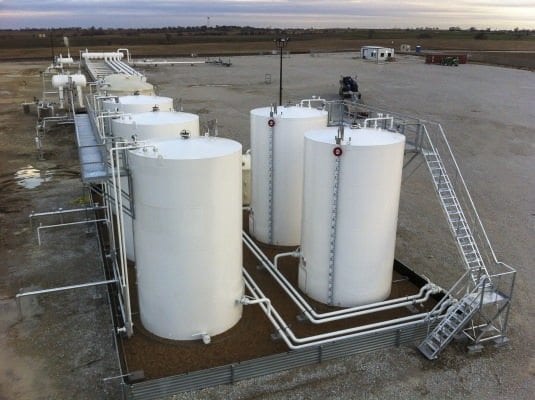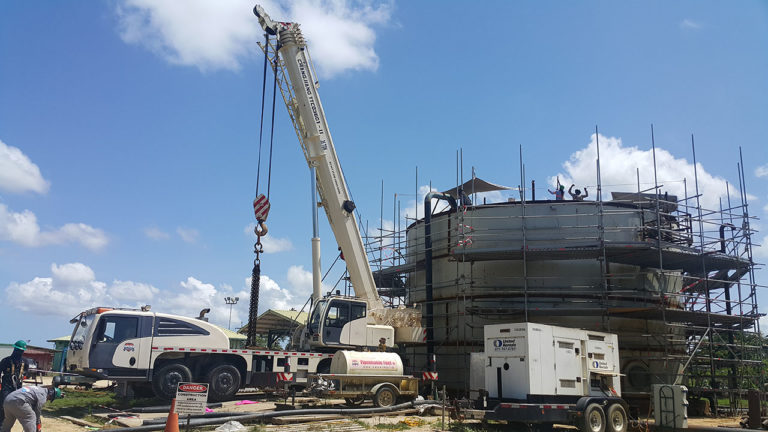Understanding the Fundamentals Behind API 650 Welding Inspection Procedures
A Step-by-Step Check Out the Setup Process of Welding Examination Techniques
Welding inspection is a critical procedure that guarantees architectural integrity and safety. The installment of evaluation strategies includes numerous organized steps, each integral to accomplishing reliable results. From preparation and tool choice to performing visual and non-destructive examinations, each phase needs careful attention. Recognizing these procedures can substantially enhance top quality guarantee in welding projects. What challenges emerge in carrying out these techniques, and how can they be successfully dealt with?
Understanding the Importance of Welding Evaluation
Welding assessment is a crucial element of ensuring architectural honesty and safety and security in construction and manufacturing processes. This technique entails examining welded joints for flaws, making sure that they fulfill specific standards and policies. By systematically evaluating weld high quality, assessors can recognize concerns such as splits, voids, and incomplete fusion, which can compromise the strength and toughness of structures.
The significance of welding inspection expands past prompt safety problems; it aids protect against pricey failings and prospective dangers in the lengthy term. Efficient assessment strategies foster compliance with industry standards, therefore enhancing the overall reliability of bonded components. Additionally, a durable evaluation procedure adds to preserving the online reputation of suppliers and builders, as it assures clients of the quality of their jobs. Inevitably, recognizing the significance of welding inspection is critical for promoting risk-free building techniques and making sure the longevity of vital infrastructure and items.
Choosing the Right Devices for Assessment
When selecting the proper tools for evaluation, it is essential to ponder the certain needs of the welding process and the materials entailed. Various examination methods, such as visual, ultrasonic, and radiographic screening, demand distinctive tools tailored to their special demands. For visual examinations, tools like amplifying calipers and glasses are crucial for examining weld high quality. Ultrasonic screening requires specialized equipment qualified of sending and receiving acoustic waves to find inner defects. Radiographic testing, on the other hand, uses X-ray or gamma-ray resources together with delicate movie or electronic detectors to reveal disparities.
Furthermore, personal protective tools (PPE) is necessary to ensure the security of examiners during examinations. Selecting the right tools not only improves the precision of evaluations however likewise adds to the general honesty and safety and security of the welding task. Subsequently, a comprehensive understanding of available tools and their applications is necessary for efficient welding assessment.
Preparing for the Evaluation Process
Prior to starting the evaluation process, it is vital to establish a comprehensive plan that lays out the extent and goals of the examination. This plan must consist of particular requirements that specify what makes up acceptable quality in the welding job being evaluated. Determining the relevant codes and criteria is important, as they will certainly assist the assessment criteria and techniques.
Furthermore, personnel involved in the examination should be effectively trained and licensed in welding examination methods to assure dependability and precision. A checklist can be useful in organizing the different aspects of the assessment, ranging from equipment preparedness to environmental conditions that can influence the evaluation.

Lastly, logistical considerations such as organizing, available sources, and interaction between staff member need to be dealt with. By preparing systematically, inspectors can boost the performance of the assessment and make sure that all essential factors are duly taken into consideration before waging the inspection itself.
Conducting Visual Assessments

Conducting aesthetic assessments is a vital step in the welding inspection procedure, needing careful prep work to ensure efficient evaluation. Assessors should be familiar with crucial issue indications that can indicate potential concerns in weld high quality. By focusing on these aspects, one can boost the general integrity of the inspection outcomes.
Planning For Visual Evaluation
Aesthetic examination offers as a vital initial step in the welding examination process, guaranteeing that any kind of potential flaws are identified early (API 650 Welding Inspection). Appropriate prep work is crucial for reliable aesthetic evaluation. Examiners ought to start by evaluating pertinent documents, including welding procedures and specifications, to recognize the project demands. They have to collect required devices, such as amplifying glasses, flashlights, and suitable personal protective devices (PPE) A thorough examination of the evaluation location is essential; inspectors ought to confirm it is complimentary and clean of blockages. Additionally, it is very important to establish perfect illumination conditions to improve exposure of welds. By taking these primary steps, examiners can produce an atmosphere for determining inconsistencies and assuring the stability of the welded structures
Key Problem Indicators
An extensive understanding of crucial defect indicators is essential during aesthetic assessments to guarantee the high quality and safety of welded joints. Inspectors need to concentrate on details indications such as fractures, porosity, undercuts, and incomplete blend. Cracks may look like sharp lines and can endanger architectural stability. Porosity materializes as tiny openings that can deteriorate weld strength. Undercuts, which are grooves along the weld edge, can bring about stress concentration. Insufficient combination indicates that the weld steel did not appropriately bond with the base material, causing a weak joint. By systematically identifying these defects, examiners can identify compliance with industry requirements and improve the general reliability of welded frameworks, ultimately adding to more secure operational problems.
Implementing Non-Destructive Examining Methods

Many non-destructive screening (NDT) techniques are indispensable to ensuring the integrity of bonded structures without endangering their functionality. These techniques enable inspectors to examine weld top quality and detect issues without triggering damages to the products being evaluated. Usual NDT techniques consist of ultrasonic screening, radiographic testing, magnetic particle testing, and color straight from the source penetrant testing. Each technique serves a specific function, addressing various sorts of imperfections such as splits, porosity, or incomplete fusion.
Implementing NDT methods calls for a systematic approach, beginning with choosing the ideal method based on the materials and the nature of the weld. Training personnel in these techniques is necessary for accurate outcomes. In addition, establishing clear procedures and standards guarantees consistency throughout the examination procedure. By incorporating NDT right into the welding evaluation process, organizations can boost the dependability of their items while minimizing potential threats linked with architectural failures. This proactive method ultimately adds to maintaining security and quality standards in bonded constructions.
Documenting and Assessing Inspection Outcomes
Reliable documentation and evaluation of evaluation outcomes are necessary elements of the welding inspection process. Accurate records of examination searchings for serve as a referral for quality control and compliance with industry criteria. API 650 Welding Inspection. Inspectors need to use structured kinds or digital platforms to log information such as the sort of weld, evaluation methods employed, and any discrepancies determined during the evaluation
Once data is collected, extensive analysis is essential. This involves contrasting outcomes versus established standards to recognize fads or reoccuring concerns. Statistical devices might be used to measure issues and examine their influence on total weld high quality.
Furthermore, efficient interaction of searchings for to relevant stakeholders is vital. Records and summaries must be concise and clear, highlighting vital insights and suggestions for rehabilitative actions. By systematically examining and recording evaluation outcomes, companies can promote continuous renovation in welding techniques and enhance product stability.
Frequently Asked Concerns
What Certifications Are Required to Come To Be a Welding Examiner?
To become a welding examiner, one commonly needs relevant accreditations such as AWS CWI, in addition to experience in welding practices, understanding of welding codes, and efficiency in examination strategies to assure quality and security requirements.
Exactly How Commonly Should Welding Inspections Be Performed?
Welding assessments should be conducted on a regular basis, commonly after each weld is finished, and occasionally during jobs. Aspects such as job complexity, market requirements, and regulatory needs can affect the regularity of these assessments.
What Is the Price of Welding Evaluation Providers?
The expense of welding examination solutions varies considerably based on factors such as task dimension, intricacy, and place. Generally, prices vary from $100 to $150 per hour, with added charges for specialized testing and certifications.
Are There Certifications for Welding Inspectors?
Yes, there are numerous accreditations for welding examiners, consisting of those used by the American Welding Society (AWS) and the International Institute of Welding (IIW) These accreditations guarantee assessors possess the necessary abilities and understanding for effective analyses.

Exactly how Do I Choose an Examination Provider?
To pick an evaluation solution copyright, one must evaluate certifications, experience, sector credibility, and client testimonials. Additionally, contrasting service offerings and pricing can assist assure the chosen copyright satisfies details job needs efficiently.
Additionally, personnel involved in the examination must be effectively educated and accredited in welding assessment methods to assure integrity and precision. Conducting aesthetic examinations is an essential action in the welding evaluation process, calling for careful preparation to guarantee efficient examination. Read More Here Aesthetic examination offers as a crucial first step in the welding inspection process, assuring that any kind of possible problems are recognized early. Effective documents and analysis of examination outcomes are necessary parts this page of the welding examination procedure. Welding inspections need to be conducted consistently, typically after each weld is finished, and regularly throughout projects.